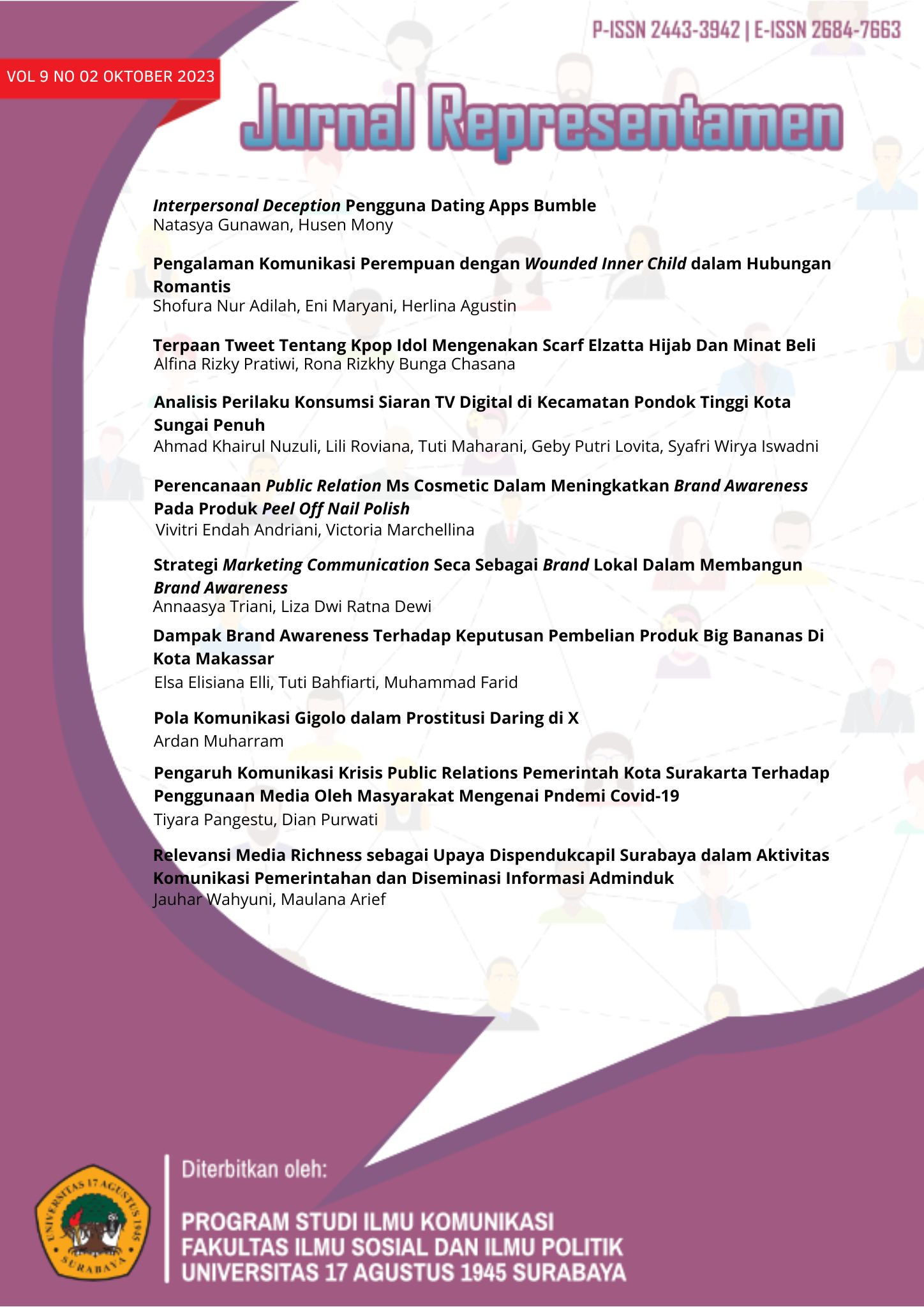Interpersonal Deception Pengguna Dating Apps Bumble
DOI:
https://doi.org/10.30996/representamen.v9i02.8124Abstract
Bumble is an application designed so that people can establish relationships with one another, whether as friends, girlfriends, or potential partners (husband and wife). For this purpose, as with its terms and conditions, Bumble requires that its users share information about themselves correctly. Not a few of its users commit deception, with various purposes. This study aims to explore the forms of lying (interpersonal deception) that occur in Bumble, the motivations that drive them to lie, and the implications of these lies for victims and perpetrators. The theory used in this study is Interpersonal Deception Theory (IDT) introduced by David Buller and Judee Burgoon (1996). The method uses a qualitative exploratory approach. Data was collected through interviews with five Bumble users and analyzed using the interactive model from Miles & Huberman. The results of his research are that both victims and perpetrators lie about their information. Perpetrators tend to cat-fishing and photo manipulation of themselves, flexing, and breadcrumbing behavior. The perpetrator's deception action aims to get the desired partner match. As for victims, deception is done to maintain privacy.
Keywords: Interpersonal Deception, Bumble, Dating online
Downloads
Downloads
Published
Issue
Section
License
Authors whose manuscript is published will approve the following provisions:
The right to publication of all journal material published on the jurnal representamen website is held by the editorial board with the author's knowledge (moral rights remain the property of the author).
The formal legal provisions for access to digital articles of this electronic journal are subject to the terms of the Creative Commons Attribution-ShareAlike (CC BY-SA) license, which means Jurnal Representamen reserves the right to store, modify the format, administer in database, maintain and publish articles without requesting permission from the Author as long as it keeps the Author's name as the owner of Copyright.
Printed and electronic published manuscripts are open access for educational, research and library purposes. In addition to these objectives, the editorial board shall not be liable for violations of copyright law.











